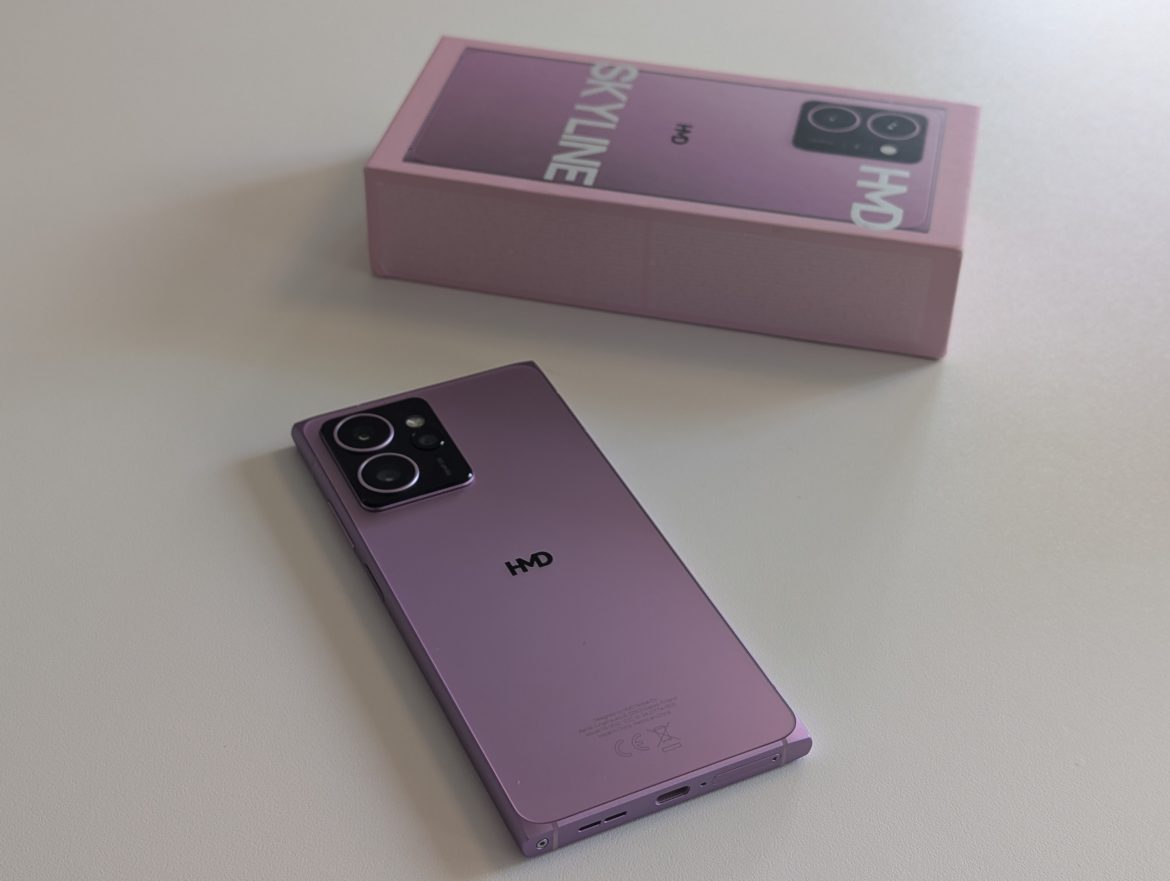TL;DR
Looking for a mid-range phone that's built to last and easy to fix? The HMD Skyline offers a durable, recycled aluminum design and boasts an impressive 144Hz P-OLED screen, strong battery life with Qi2 wireless charging, and a versatile 108MP camera. While it handles daily tasks with ease, expect some hiccups with demanding games and inconsistent autofocus. Its standout feature is repairability, thanks to a partnership with iFixit, but a shorter update policy than competitors might be a concern. Curious if its repairability and value outweigh its limitations? Dive into the full review!
The HMD Skyline smartphone aims to deliver a combination of durability, repairability, and respectable performance within the mid-range price bracket. With flagship devices from Apple, Samsung, and Google commanding prices in the 15,000-20,000 SEK range, a phone with a recommended retail price of 5,790 SEK is a welcome addition to the market. This review assesses its performance and overall value.
Design and Build Quality
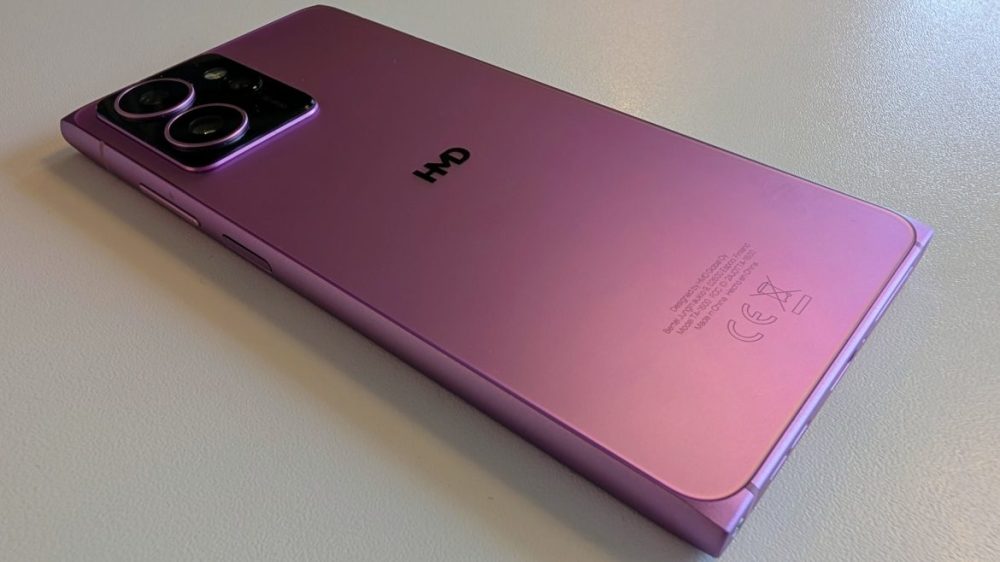
The HMD Skyline features a design that evokes Nokia’s classic Lumia series, characterized by its blocky form factor. Weighing in at 209 grams, the device doesn’t feel excessively heavy. However, the angular design may not be the most ergonomic for prolonged use. The aluminum frame contributes to a solid and durable feel, lending the phone a premium impression.
The HMD Skyline’s IP54 rating is a notable limitation. This provides protection against dust and splashes, but offers no further ingress protection. A more robust IP rating would have been preferable, as it is becoming increasingly common even in the mid-range category.
Screen
The device incorporates a 6.55-inch P-OLED display with a resolution of 2400×1080 pixels, delivering vibrant colors and strong contrast. A key feature is the 144 Hz refresh rate, which is particularly impressive for a phone in this price segment.
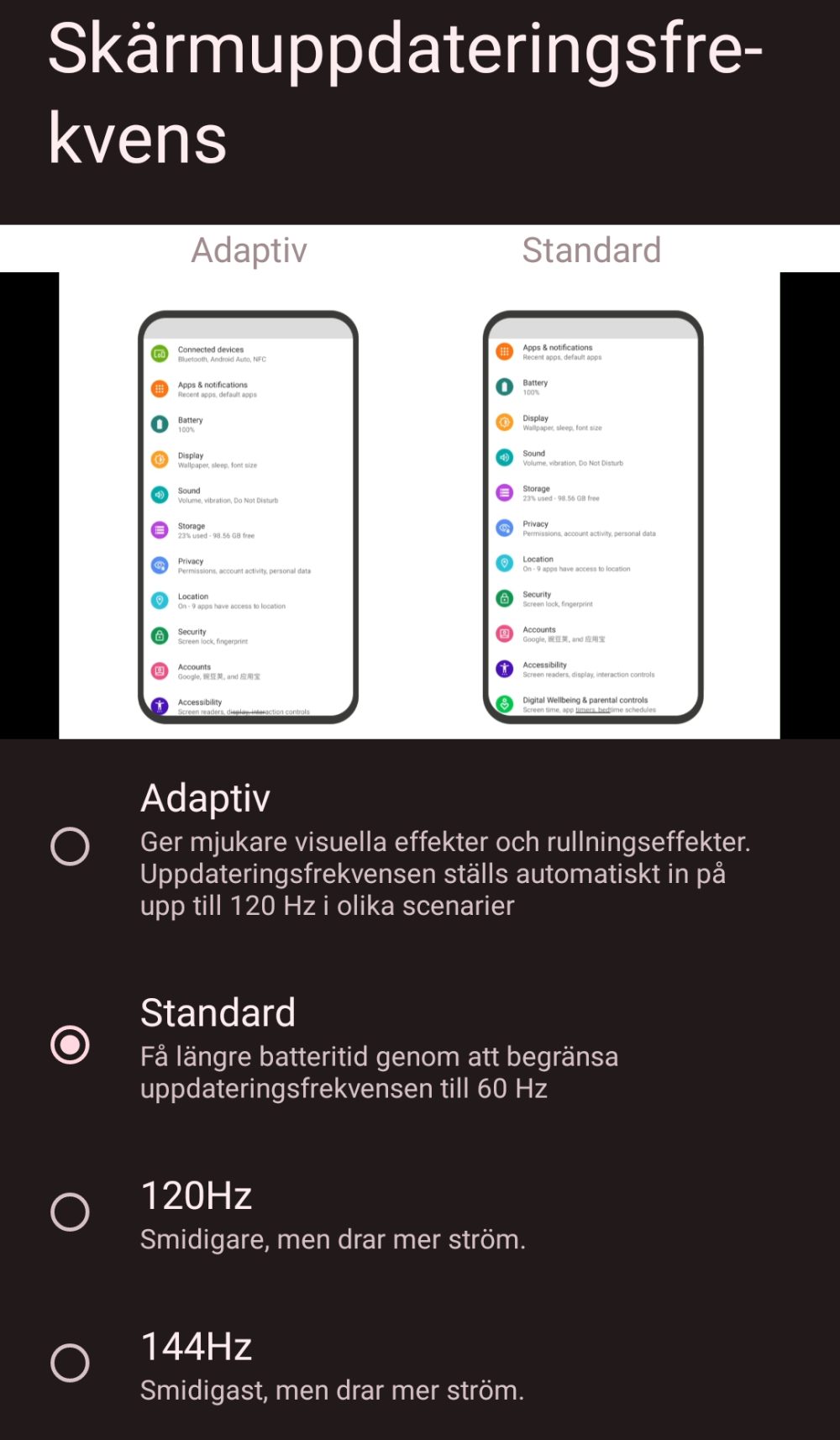
The display is configured to 60 Hz by default, which results in less fluid scrolling. The adaptive refresh rate mode yielded the best results in our testing. Interestingly, the adaptive mode sometimes appeared smoother than the fixed 144 Hz setting.
With a maximum brightness of approximately 500 nits, the screen can be challenging to view in direct sunlight, although it remains adequate for indoor use.
Battery Life and Charging
The HMD Skyline offers commendable battery life, readily lasting a full day even with intensive usage, thanks to its 4600 mAh battery. A distinctive feature is its support for Qi2 wireless charging, making it among the first devices to incorporate this technology.
Qi2 represents the latest iteration of wireless charging technology, utilizing magnetic alignment to ensure optimal positioning between the phone and charger for maximum charging efficiency. Users can expect faster and more consistent wireless charging, as well as reduced energy loss. Qi2 builds upon the MagSafe concept initially introduced by Apple, but is standardized for broader device compatibility.
The device supports 33 W fast charging via a wired connection, achieving a 0-50% charge in approximately 30 minutes, with a full charge taking just over 90 minutes. Wireless charging is capped at a maximum of 15 W.
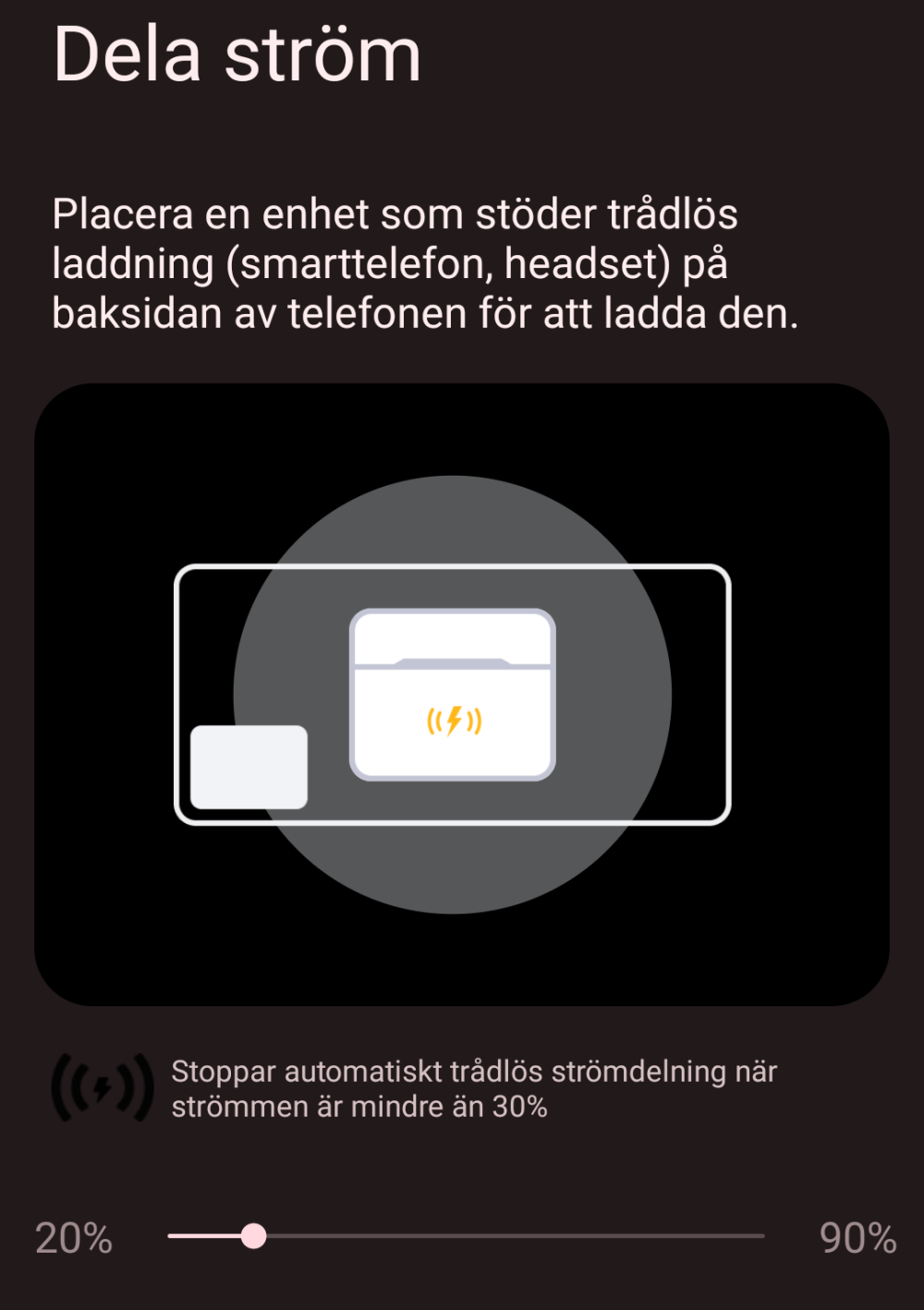
An additional feature is reverse wireless charging, enabling the phone to charge other devices, such as wireless headphones or smartwatches, directly from its battery.
Performance
The HMD Skyline is powered by a “Qualcomm Snapdragon 7s Gen 2” Mobile Platform. This chipset provides ample performance for typical tasks such as web browsing, social media use, and video playback, ensuring a smooth user experience. However, demanding graphics-intensive games like Genshin Impact can induce stuttering and noticeable heat generation.
The device includes 8 GB of RAM and 128 GB of internal storage, which is standard for its price range. Notably, it also offers the increasingly rare option to expand storage via a microSD card, a significant advantage for users with extensive media libraries.
Security and Unlocking Options
The HMD Skyline incorporates a fingerprint reader integrated into the power button. While generally fast, its small size requires precise finger placement for immediate recognition. Registering the same finger multiple times, capturing different areas of the fingerprint, may improve accuracy.
The phone also offers basic facial recognition, which functions reliably in well-lit environments but exhibits reduced performance in low-light conditions.
Camera
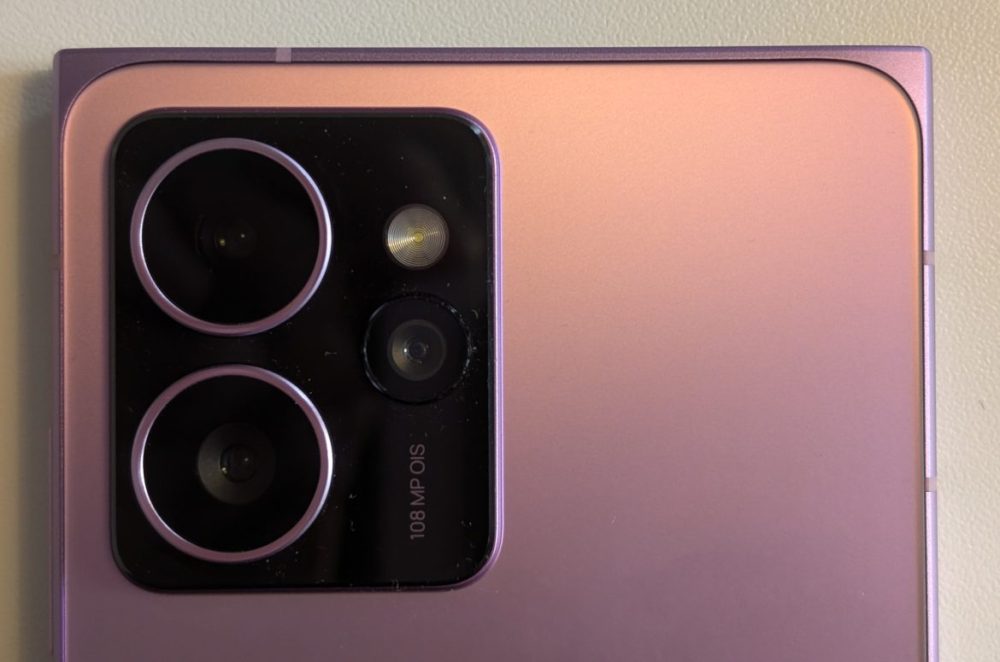
The HMD Skyline is equipped with a triple-camera system on the rear, comprising a 108 MP main camera, a 12 MP wide-angle lens, and a 50 MP zoom lens.
The main camera captures sharp images in favorable lighting conditions. However, the autofocus can be inconsistent, sometimes requiring multiple attempts to achieve a sharp focus. The wide-angle camera performs adequately in daylight but suffers a rapid decline in quality under low-light conditions, exhibiting noticeable noise and blurring.
The zoom camera provides 2x optical zoom and up to 4x lossless digital zoom. However, the absence of optical image stabilization makes it challenging to capture consistently sharp images at higher zoom magnifications.
Inconsistencies in color and white balance between the different camera lenses pose another issue. This is evident in the example below, where we captured the same scene with the wide-angle, main, and zoom cameras in quick succession:


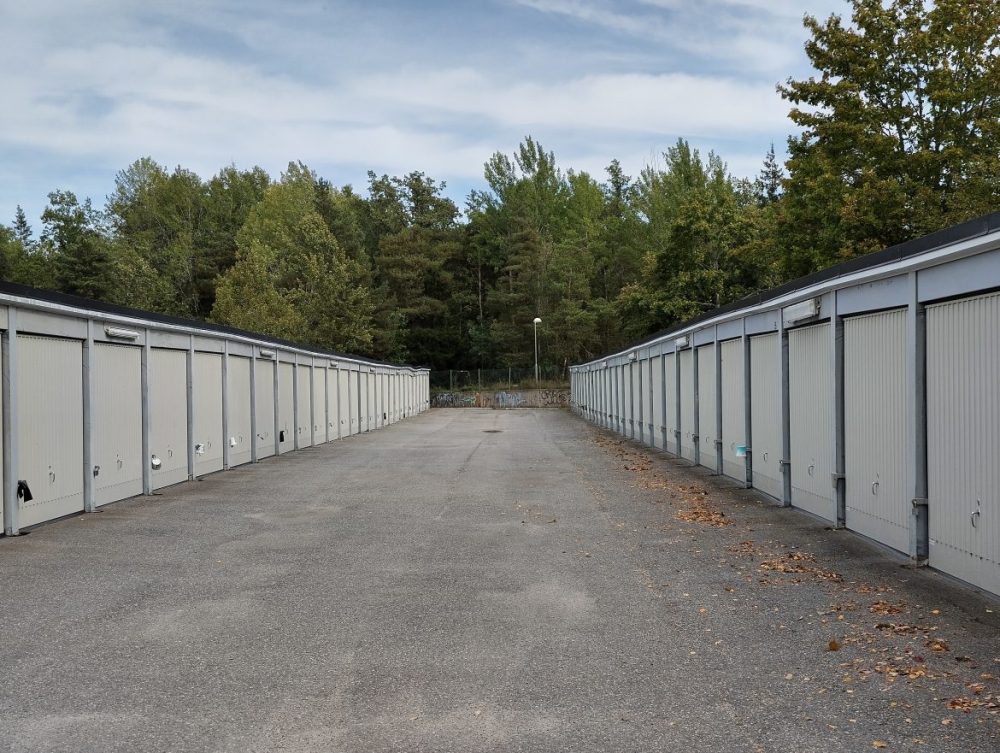
A 50 MP front-facing camera provides satisfactory performance for selfies and video calls.
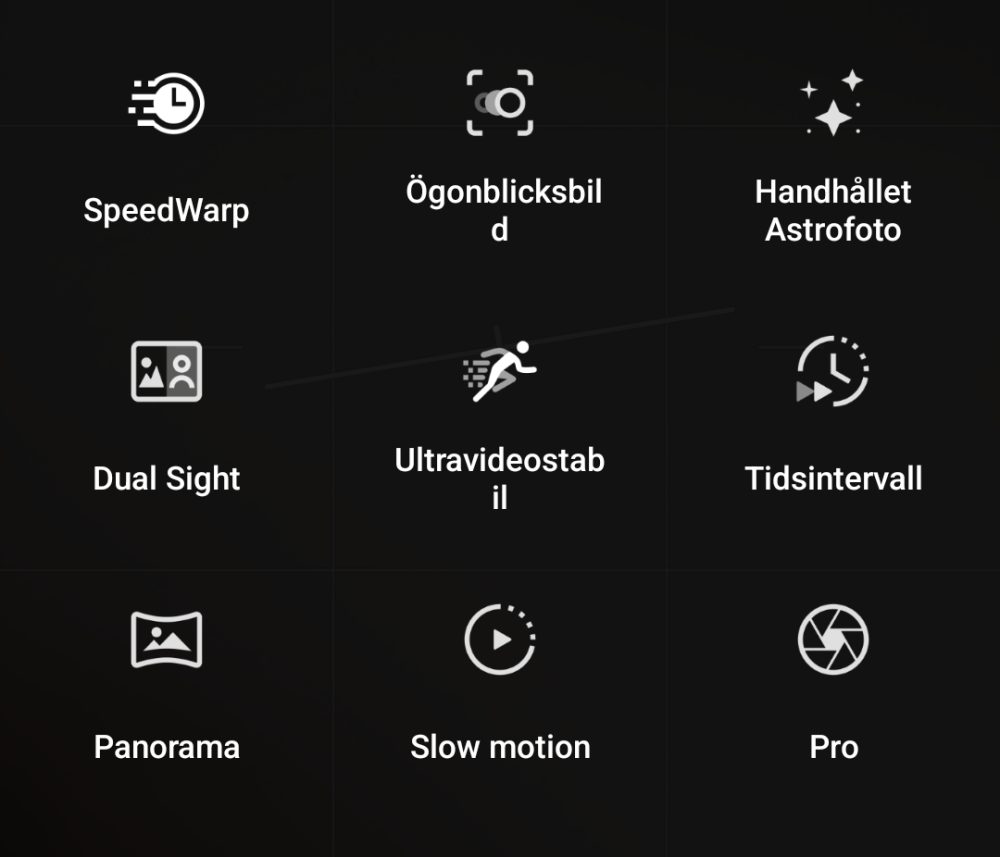
The camera application offers a comprehensive suite of modes and functions. While the cameras may not rival those found on flagship devices, the HMD Skyline offers an enjoyable photographic experience. Users can leverage the various modes for creative expression, with generally acceptable results.
The following are sample images captured during our testing of the phone:

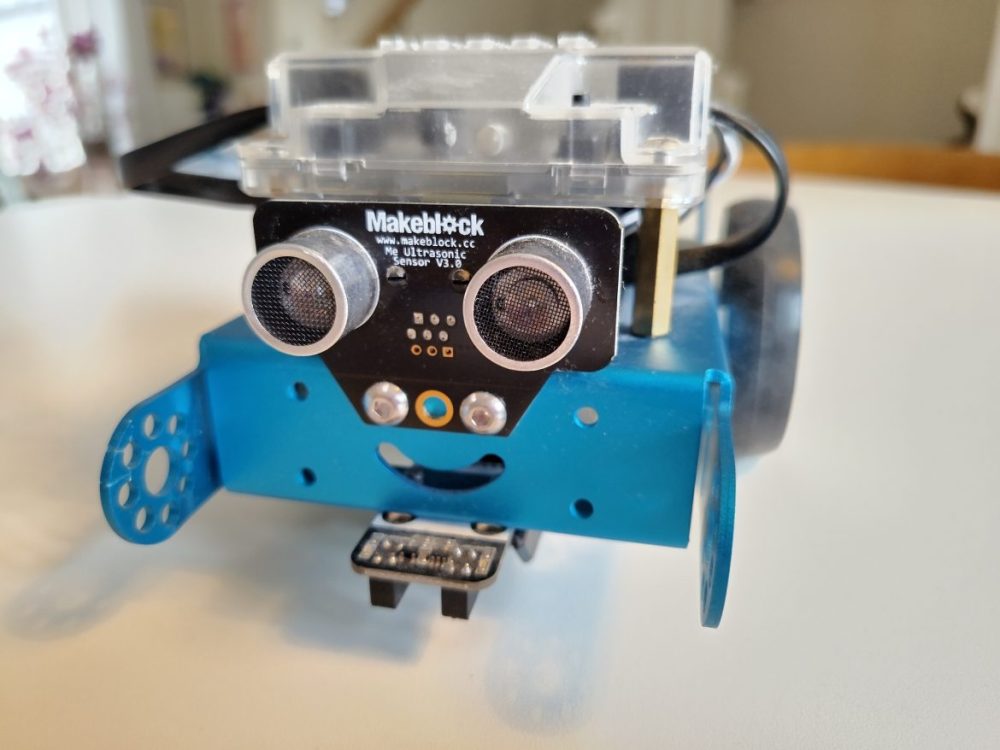
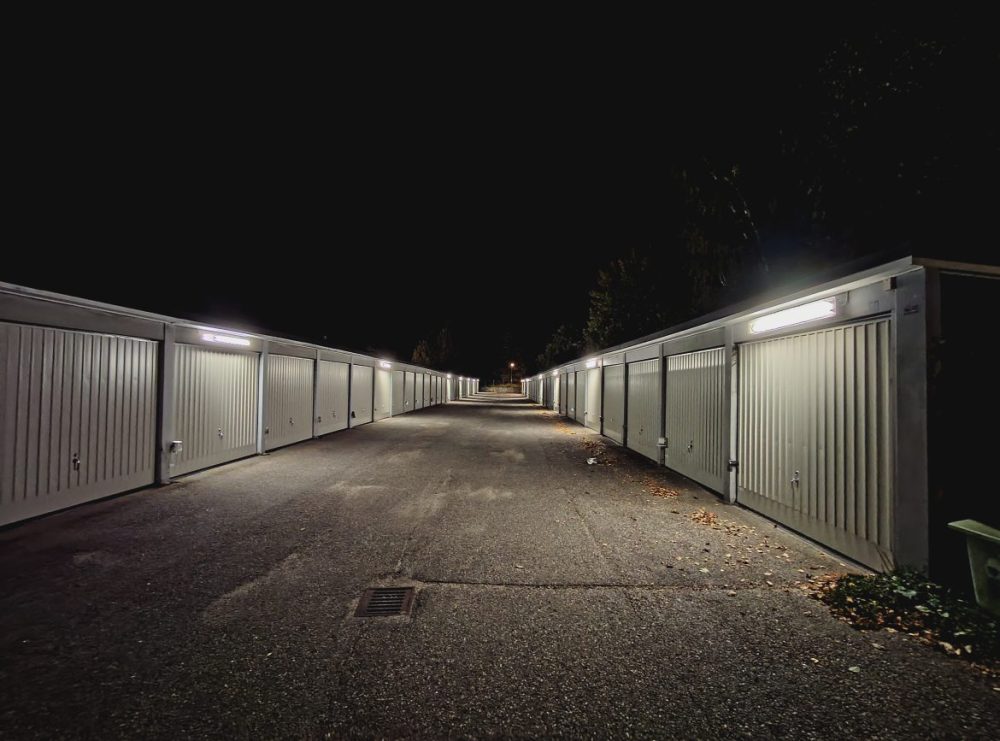






Repairability and Sustainability
HMD is making a significant commitment to sustainability. The frame is constructed from 100% recycled aluminum, and the packaging is entirely plastic-free. However, the HMD Skyline’s standout feature is its emphasis on repairability. Through a partnership with iFixit, HMD provides access to spare parts and detailed repair guides, facilitating the replacement of components such as the battery, USB port, and even the display. Accessing the phone’s internal components simply requires loosening a small screw.
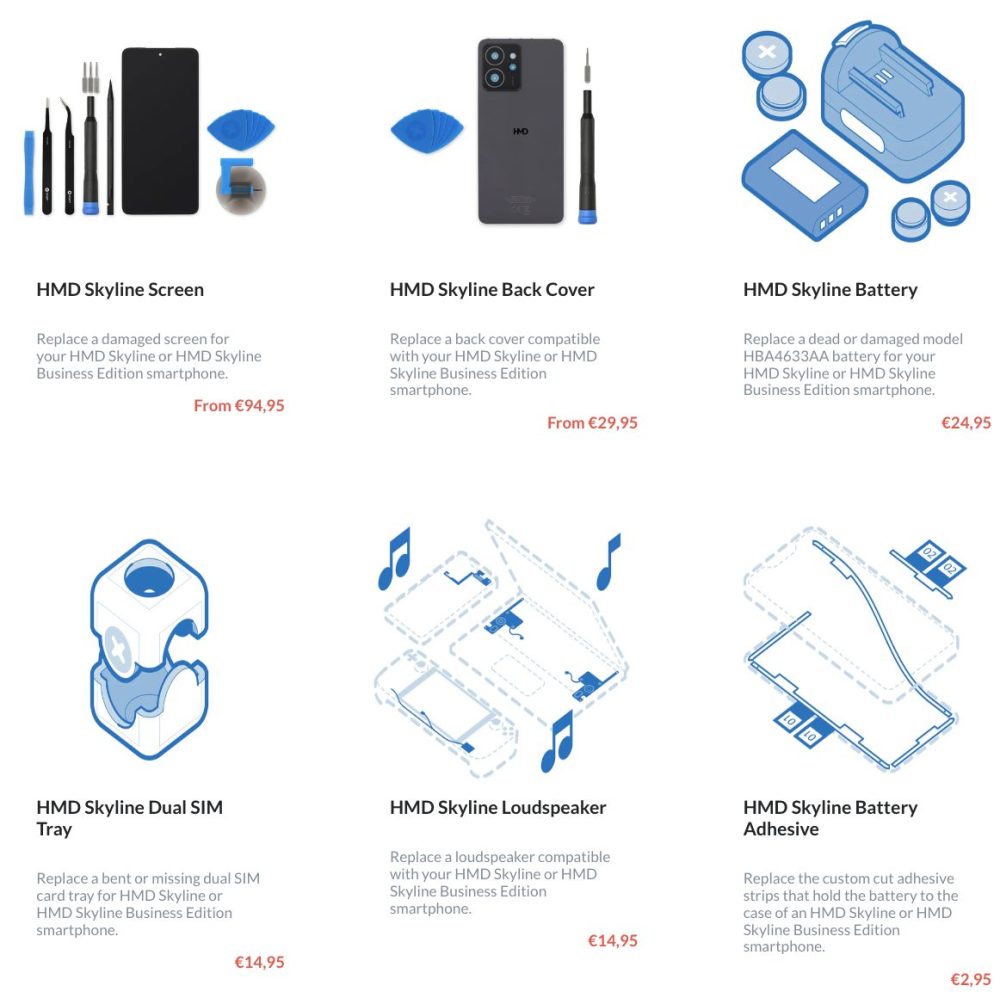
A notable limitation is HMD’s provision of only two years of system updates and three years of security updates. This falls short of expectations, given the device’s focus on repairability and sustainability. The limited software support may prove to be a major disadvantage for users intending to use the phone for an extended period. The value of battery replacement diminishes when the device no longer receives software updates.
Conclusion
The HMD Skyline is a compelling mid-range device distinguished by its unique design and emphasis on repairability. It delivers a positive user experience, characterized by adequate performance, satisfactory battery life, and a decent camera, all at a competitive price point. However, potential compromises include a relatively short update policy and a less-than-ideal IP rating.
In a market where competitors are increasingly offering extended software update commitments, it is challenging to award the HMD Skyline a top rating. Despite our positive experience with the device during testing, a more comprehensive update policy would make it a clear choice for younger users or individuals seeking a capable alternative to flagship devices without the associated cost.
HMD provided review units for this assessment. The provision of materials does not influence our editorial independence. Our reviews are conducted independently, with our readers and consumers as our primary focus.
